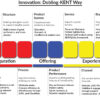
Care provision over time has been driven by medicines, surgical techniques, and technological innovations. Nonetheless, recent work and study suggest that the room in which care is delivered is therapeutic in itself. From the design of an ICU suite to the design of a waiting area, physical and emotional spaces of a hospital largely establish patient outcomes.
As architect Richard Neutra perceptively observed, “The environment shapes people far more than people shape the environment.” This reality goes very deep in health care, where comfort, trust, and alleviation of stress often expedite recovery as much as medical therapies.
The Science of Heeling Spaces
Research on environmental psychology and healthcare building design has regularly suggested that natural light exposure, vegetation, and conditioned soundscapes reduce stress, lower blood pressure, and support immune functioning [1]. For instance, it was proven in Roger Ulrich’s seminal study in 1984 that patients recovering post-surgery with their views over greenery recovered faster and required less pain medication compared with patients whose views overlooked brick walls[2].
In India, there are studies concordant with these results. In a study at AIIMS in 2020, patient wards with higher light and ventilation actually had lower length of stay and lower scores for anxiety [3]. In other words, the building is not peripheral—it is central to recovery.
Indian Examples: Patient-Centric Design
Progressive Indian hospitals have begun including this philosophy in their designs. Fortis Healthcare, for example, has made significant investments in spacious, ventilated ICUs, happy and illuminated paediatric units, and therapeutic gardens. Apollo Hospitals, Chennai, equally emphasizes patient-centered architecture with large corridors, meditation rooms, and quiet recovery rooms.
Contrast with poorly funded government hospitals with congestion and poor hygiene. Quality is judged by patients based on cleanliness. When wards are crowded or washrooms are dirty, trust in care is lost—although medical competencies remain very good. This contrast illustrates the reason why India’s NABH (National Accreditation Board for Hospitals) demands stringent infection control and environmental hygiene standards as an accreditation condition.
World Lessons: Beyond Walls, Towards Well-being
Globally, hospitals have pioneered therapeutic environments.
Singapore General Hospital integrates art galleries, rooftop gardens, and therapeutic courtyards. Families and patients interact with spaces designed with the belief of reducing loneliness and creating tranquillity.
In the United States, the Cleveland Clinic follows a policy of “quiet hospital” where noise is strictly regulated out of consideration for patients’ rest.
Nordic health systems frequently construct hospitals adjacent to forests or waterfronts, taking inspiration from the Nordic tradition of friluftsliv—the notion that exposure to nature boosts strength and health.
These projects reveal a primary transformation: hospitals are no longer sterile institutions but healing ecosystems.
Hygiene and Security: More Than Cosmetical
Cleanliness is never about appearances alone—it is lifesaving. The World Health Organization (WHO) makes hospital-acquired infection (HAI) one of the leading causes of preventable harm. Small modifications such as natural ventilation, daily sanitation, and clear spaces decrease infection risk dramatically.
In India, NABH standards require daily housekeeping schedules, separation of biomedical wastes, and regular environmental audits. Hospitals like Narayana Health have integrated robust infection control programs so that sanitation is core to their brand reputation.
Correspondingly, the majority of government hospitals are handicapped by structural and financial inadequacies. Crowding will necessarily render even optimal protocols ineffective, illustrating how environmental limitations outweigh clinical ingenuity.
Just as Mahatma Gandhi said, “Sanitation is more important than independence.” To health facilities, the same wisdom highlights the inseparability of hygiene from recovery and dignity.
Emotional Environments: Tranquility and Trust
Physical environment is defined by architecture, but emotional hospital ambiance matters equally. Friendly receptionists, nurturing nurses, and directional signage alleviate patient anxieties. In an article published in the Journal of Patient Experience (2019), the researchers were able to establish that patients with positive descriptions of interactions with staff perceived their environment as “cleaner” and “safer” regardless of unchanged infrastructure [4].
It is one of the reasons why hospitals invest in music therapy, spiritual rooms, and counselling rooms. An atmosphere of comfort conveys respect, care, and trustworthiness—values as basic as antibiotics or surgery.
Business Lesson: Store as Therapy
To managers of hospitals and health entrepreneurs, the lesson is clear: care for place as therapy.
Reception rooms need to convey warmth, not officialese. Natural light, plants, and minimal clutter immediately ease tension.
Recovery rooms are about compromising privacy for easy access. Soundproofing, air improvements, and curtains are comforting additions.
Signs and directional aids need to be clear. A lost patient in the corridors is stressed enough without running into a doctor.
Staff spaces matter. Doctors and nurses working out of quiet, ergonomic spaces are better doctors and nurses.
Investment in healing spaces pays back in reputation, patient satisfaction, and even financial sustainability. In Derek Parker’s words, an international hospital consultant, “Good design is not about beauty; it’s about making outcomes—healthier patients, happier staff, and stronger communities.”
Looking Forward: Toward Healing Ecosystems
India is at a crossroads. While corporate hospitals of international standards embrace environmentally-oriented care, government hospitals invariably fail. The issue is with bridging the gap without augmenting inequity. Even in scarce-resource settings, inexpensive methods like ventilation, sanitation, and noise reduction go a long way.
Globally, sustainability is becoming the new frontier. Green buildings with minimal carbon footprints, energy from renewable sources, and water recycling are reimagining hospital designs. These incentivize not only healing but also associate health care with broader planetary health agendas.
Final thoughts
Curing is much larger than medicine. An intelligently thought-through hospital space is an unobtrusive friend while one is in recovery, gaining self-confidence, alleviating strain, and regaining self-esteem. It may be Singapore General’s gardens or infection control of NABH, and the refrain is the same: location is crucial. Hospitals need to be viewed not as treatment facilities but as a healing ecology. When settings are infused with care, patients recover quicker, employees do better, and trust abounds. Just as the Indian saying so aptly reminds us, “A healthy outside starts from the inside.” In health care, the “inside” is not the body alone, but the walls, light, air, and emotions that surround healing.
Dr. Prahlada N.B
MBBS (JJMMC), MS (PGIMER, Chandigarh).
MBA in Healthcare & Hospital Management (BITS, Pilani),
Postgraduate Certificate in Technology Leadership and Innovation (MIT, USA)
Executive Programme in Strategic Management (IIM, Lucknow)
Senior Management Programme in Healthcare Management (IIM, Kozhikode)
Advanced Certificate in AI for Digital Health and Imaging Program (IISc, Bengaluru).
Senior Professor and former Head,
Department of ENT-Head & Neck Surgery, Skull Base Surgery, Cochlear Implant Surgery.
Basaveshwara Medical College & Hospital, Chitradurga, Karnataka, India.
My Vision: I don’t want to be a genius. I want to be a person with a bundle of experience.
My Mission: Help others achieve their life’s objectives in my presence or absence!
My Values: Creating value for others.
References:
- Ulrich RS. View through a window may influence recovery from surgery. Science. 1984;224(4647):420-421.
2. Dijkstra K, Pieterse M, Pruyn A. Stress-reducing effects of indoor plants in the built healthcare environment. Building and Environment. 2008;43(4):537-544.
3. AIIMS Study (2020). Environmental factors and patient recovery outcomes. Indian Journal of Community Medicine.
4. O’Connor N, et al. Patient Perceptions of Hospital Cleanliness Linked to Interpersonal Care. Journal of Patient Experience. 2019;6(3):194-201.
Leave a reply
















*Dear Dr. Prahlada N.B. Sir,*
Your article, "Place (Environment) – Wholeness Beyond Medicine," beautifully highlights the profound impact of environment on healing. As you said, "The environment shapes people far more than people shape the environment." Thoughtfully designed spaces can transform patient outcomes and staff well-being.
*Healing Spaces Matter* :
Examples like Singapore General Hospital's art galleries and rooftop gardens, or the Cleveland Clinic's "quiet hospital" policy, demonstrate the power of design. In India, even small changes like natural ventilation and sanitation can make a significant difference.
*Emotional Ambiance is Key* :
Staff interactions and patient care shape the emotional ambiance. Friendly staff, clear signage, and a welcoming atmosphere can alleviate anxieties and build trust.
*Investing in Healing Spaces* :
Prioritizing design and ambiance can improve patient satisfaction, staff morale, and reputation. Good design isn't just about beauty; it's about outcomes – healthier patients, happier staff, and stronger communities.
*Conclusion* :
ReplyYour article reminds us that environment, healing, and well-being are intricately linked. Let's create spaces that nurture body, mind, and spirit.